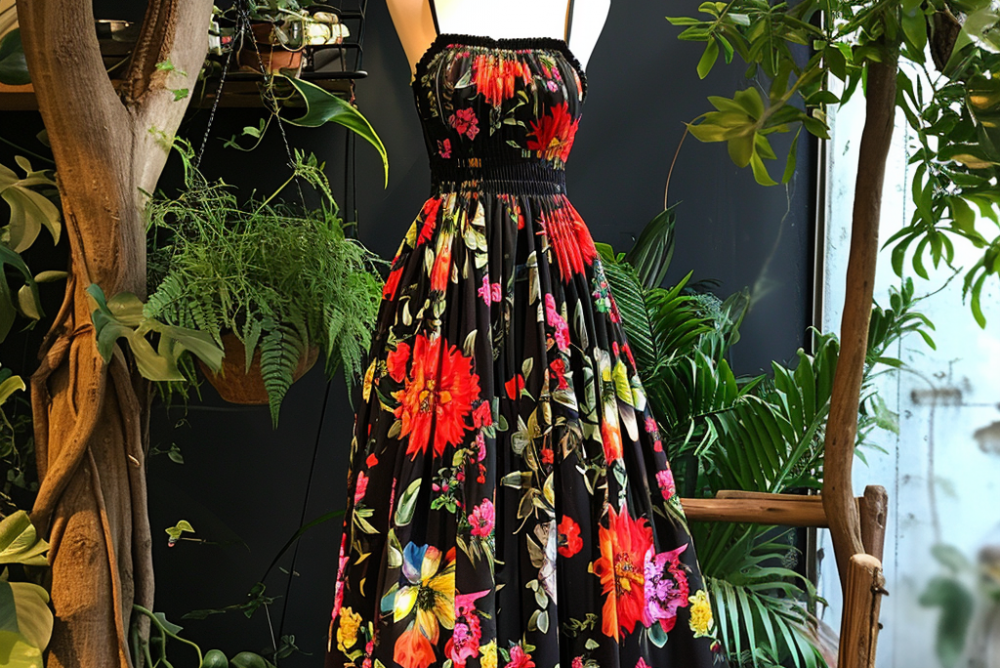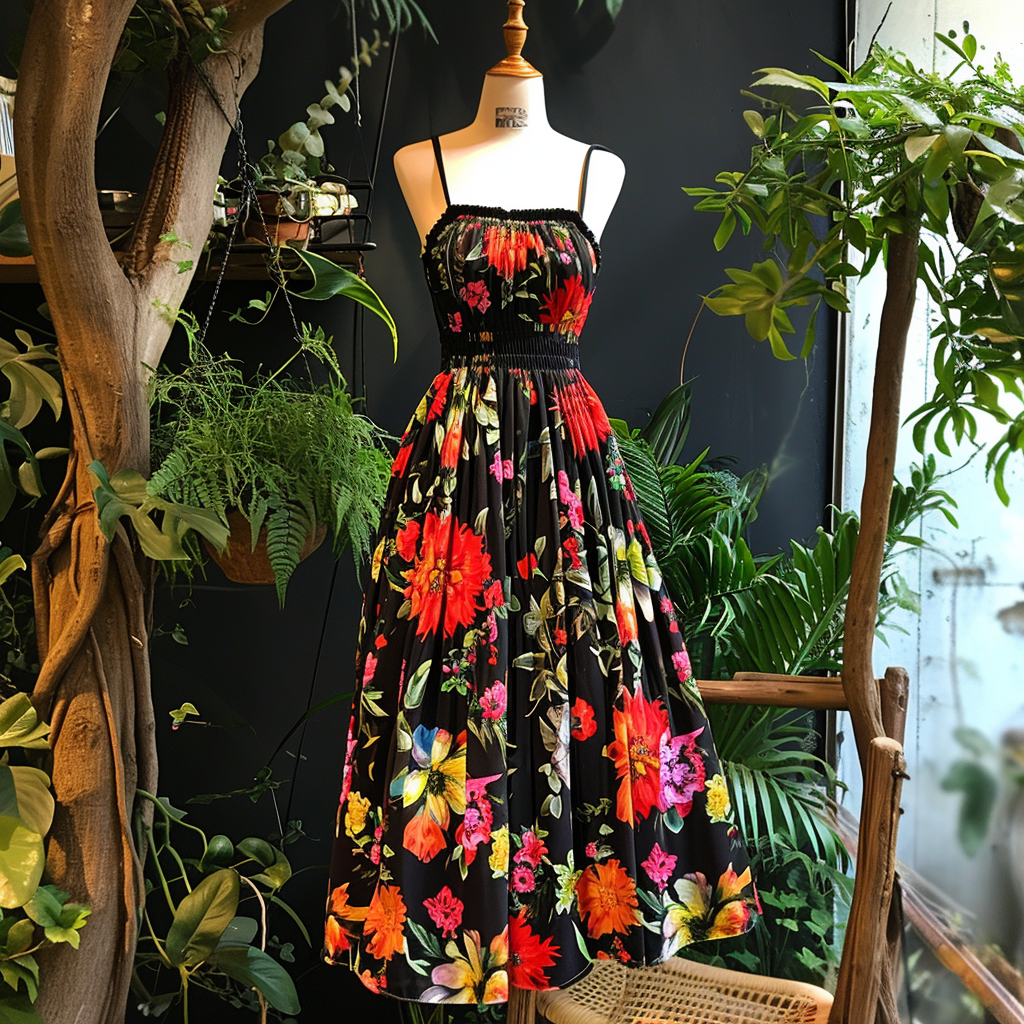A Guide to Maxi Dress Wholesale Sourcing from China


Sourcing maxi dresses wholesale from China can be an effective way for retailers and online boutiques to diversify their product range and take advantage of lower production costs. However, finding reliable suppliers, ensuring product quality, and managing logistics issues can pose challenges. By following best practices around supplier vetting, quality control, negotiations, shipping, and communication, businesses can build strategic partnerships with maxi dress factories in China and gain access to stunning yet affordable inventory.
The key is approaching maxi dress procurement from China as an opportunity to forge long-term trade relationships rather than seeking one-off transactions. Investing time into research, planning and actively managing the sourcing process leads to better outcomes for both buyer and supplier. This article provides an overview of strategies and tips for effectively procuring wholesale maxi dresses from China while avoiding common pitfalls.
Researching and Identifying Reliable Maxi Dress Suppliers in China
Conducting thorough research is the first step to finding reputable and capable maxi dress manufacturers in China. There are several effective strategies to use:
- Search industry directories like Alibaba.com and GlobalSources.com to find factories located in the main garment production regions of China. Focus on suppliers that specialize in women's dresses and have their own manufacturing facilities.
- Look for membership in trade organizations like the China National Garment Association. This indicates legitimacy.
- Check for certifications like ISO9001 quality management certification, social compliance audits, andrestricted substance certifications.
- Review online profiles in detail, checking for customer reviews, responsiveness, transparency about operations and production capacity. Avoid suppliers with no reviews or online presence.
- Ask suppliers for references from current clients, especially those in your target export markets like the US, UK or EU.
- Compare pricing between potential suppliers to filter out abnormally low bids which may indicate quality issues.
- Consider using a sourcing agent to help identify and initially vet potential factories.
Taking these steps will help generate a list of promising maxi dress factories to evaluate further. Building connections with the right suppliers lays the groundwork for successful wholesale procurement.
Evaluating Product Quality and Samples
Once prospective suppliers have been identified, the next step is assessing product quality and manufacturing capabilities. This is done by:
- Requesting fabric swatches from the factory. Inspect and feel the quality of knit, woven, stretch or printed fabrics that will be used. Ensure the fabric composition matches descriptions.
- Asking for quality control documents like factory audit reports and product testing certificates. Review reject and defect rates.
- Requesting photos of the actual factory facility and production lines. Compare with images on the supplier website to spot inconsistencies.
- Asking for samples of previous dresses manufactured, especially in styles similar to your needs. Inspect stitching, seams, hems and finishes for quality.
- Ordering pre-production samples reflecting your product specifications. Have these made in final materials and evaluated for fit, sizing and quality assurance.
- Checking care instructions are provided and testing wash/care procedures on samples. Items should withstand testing.
- Inspecting packaging used for samples; production orders should reflect the same standards.
- Providing feedback to the supplier on changes needed if quality evaluation finds issues.
Conducting in-depth quality control assessment and ordering sample products reduces the risk of problems with wholesale orders.
Negotiating Pricing and Payment Terms
Once product quality has been verified, fair and competitive pricing must be negotiated:
- Ask suppliers for their pricing structure for wholesale orders. Rates are often quoted in FOB (Free on Board) terms excluding shipping fees.
- Request quotes for different order quantities so volume discounts can be factored in. Larger orders usually mean lower per-unit costs.
- Compare pricing between factories to negotiate the best deal. Be reasonable about minimum profits for the supplier.
- Ask about applicable taxes, duties and other costs on top of the base FOB pricing. Account for all costs.
- Negotiate payment terms like 30% deposit and 70% before shipment. Avoid 100% upfront payments.
- Agree on payment methods and currency. Telegraphic bank transfer, PayPal, Alibaba Trade Assurance are common options.
- Settle payment terms in a formal purchase order or contract documenting costs, production timelines and quality control.
- Arrange for inspection of finished products before final payment is issued to ensure satisfaction.
Carefully negotiated pricing and payment terms ensure the procurement relationship with suppliers is financially beneficial for both parties in the long run.
Logistics, Shipping and Customs Procedures
Navigating the shipping, logistics and customs process for importing wholesale goods requires planning:
- Discuss shipment modes and routes with suppliers. Sea freight is the most economical option but takes over 1 month for delivery. Air freight is faster but more expensive.
- Select an experienced freight forwarder or sourcing agent to handle customs clearance and transportation. They should know import regulations.
- Choose between full container load (FCL) or less than container load (LCL) shipment based on order size. FCLs are better for large orders.
- Packaging should protect dresses from damage or moisture. Ask suppliers about anti-static packaging and waterproof containers.
- Obtain all required docs from suppliers: commercial invoice, packing list, bill of lading, Certificate of Origin.
- Pre-arrange customs clearance formalities like importer registration, duty payments, and import license.
- Insure shipments to cover loss or damage. Insurance can be obtained through carriers or third parties.
- Track shipments closely and have a customs broker proactively handle any issues at port.
With organized shipping and customs processes, wholesale dress orders can smoothly move from factory to final destination.
Managing Communication and Expectations
Open and organized communication ensures wholesale dress orders proceed as planned:
- Designate a key contact person at the supplier factory to direct all inquiries, orders and handle issues.
- Provide complete design specifications, technical packs and production timelines to the supplier.
- Align on expected manufacturing milestones, quality checks and pre-shipment inspection.
- Set up a streamlined system for progress updates from the supplier through email, messaging apps or calls.
- Follow up proactively if production delays arise. Be reasonable about adjusting timelines if valid issues occur.
- Encourage suppliers to proactively ask questions or clarify concerns rather than make incorrect assumptions.
- Resolve problems collaboratively in a non-accusatory manner. Avoid escalating conflicts unnecessarily.
- Arrange in-person factory visits if possible. Relationships improve through face-to-face interaction.
- Express appreciation to suppliers when milestones are achieved. Provide fair feedback and reviews.
Managing expectations through clear communication ensures transparency, accountability and collaboration with maxi dress suppliers in China.
Conclusion
Wholesaling affordable yet quality maxi dresses from Chinese suppliers can be immensely beneficial for both retailers and manufacturers. However, the process requires extensive research, relationship building, quality control, negotiation skills and supply chain management.
By vetting suppliers thoroughly, inspecting samples, negotiating fair pricing, streamlining logistics, and maintaining open communication, importers can develop strategic partnerships with factories in China. The time invested leads to improved inventory, higher margins, satisfied customers and trade connections that can be leveraged for future growth.
Following best practices around supplier qualification, product inspection, transparent cost negotiations, organized shipping and prompt issue resolution provides a solid foundation for maxi dress procurement success. However, flexibility and problem-solving abilities are also needed when working cross-border.
The potential challenges should not deter importers from exploring Chinese manufacturers. With the right strategies maximizing both quality and cost-efficiency, importing maxi dresses from China can become a win-win scenario for both buyer and supplier. Maintaining high ethical standards and fair working relationships also ensures the sourcing process has positive impacts.





-500x500.jpg)
-500x500.jpg)
-500x500.jpg)
-500x500.jpg)
-500x500.jpg)